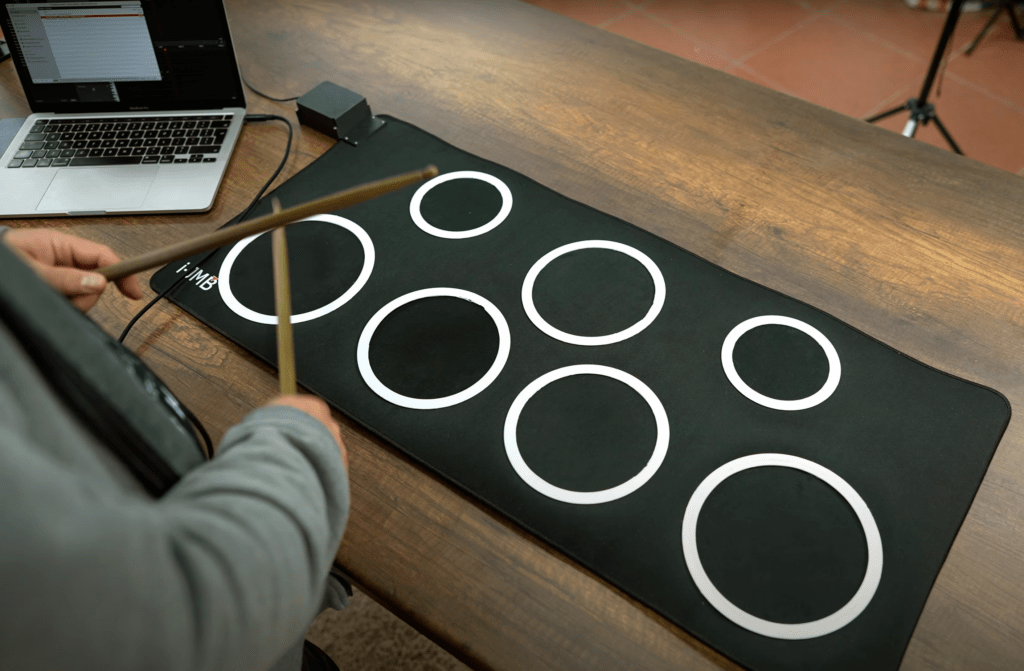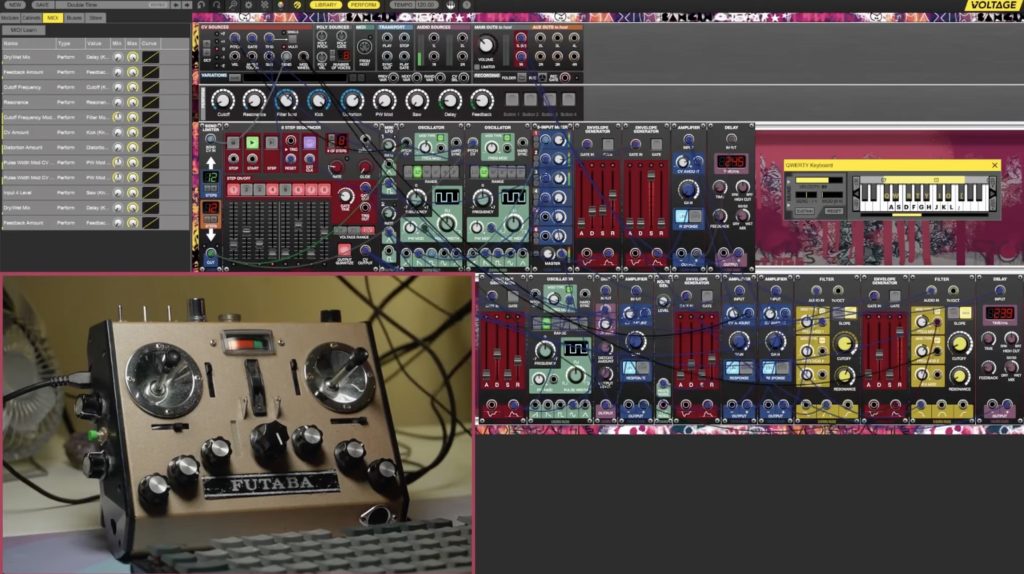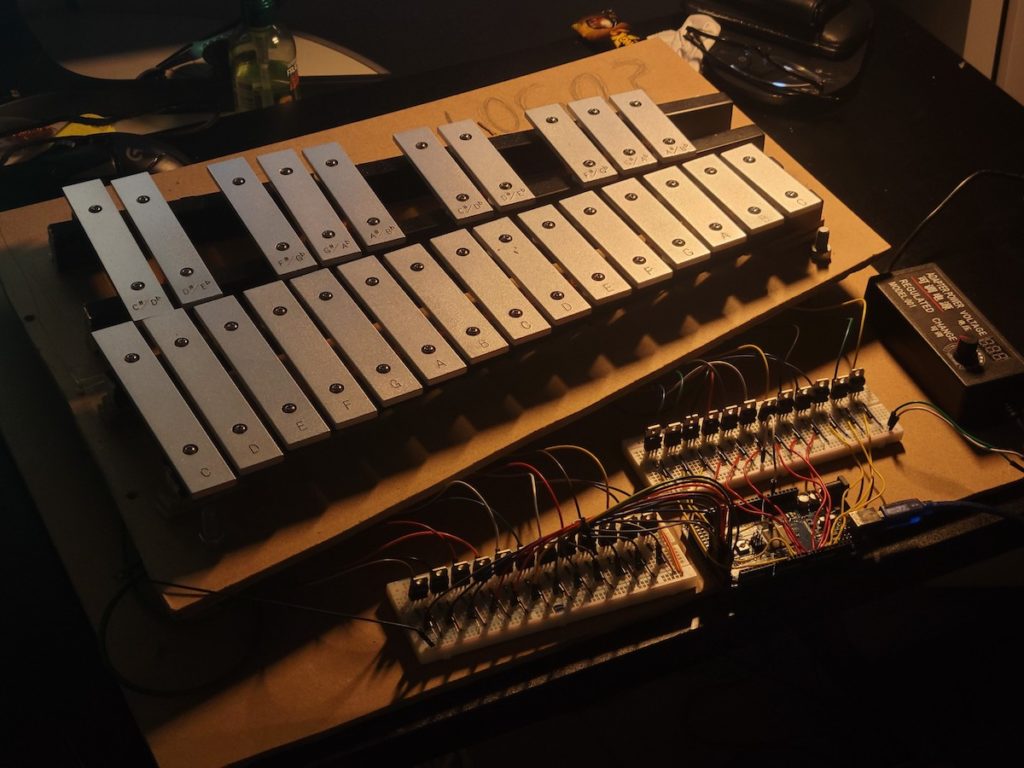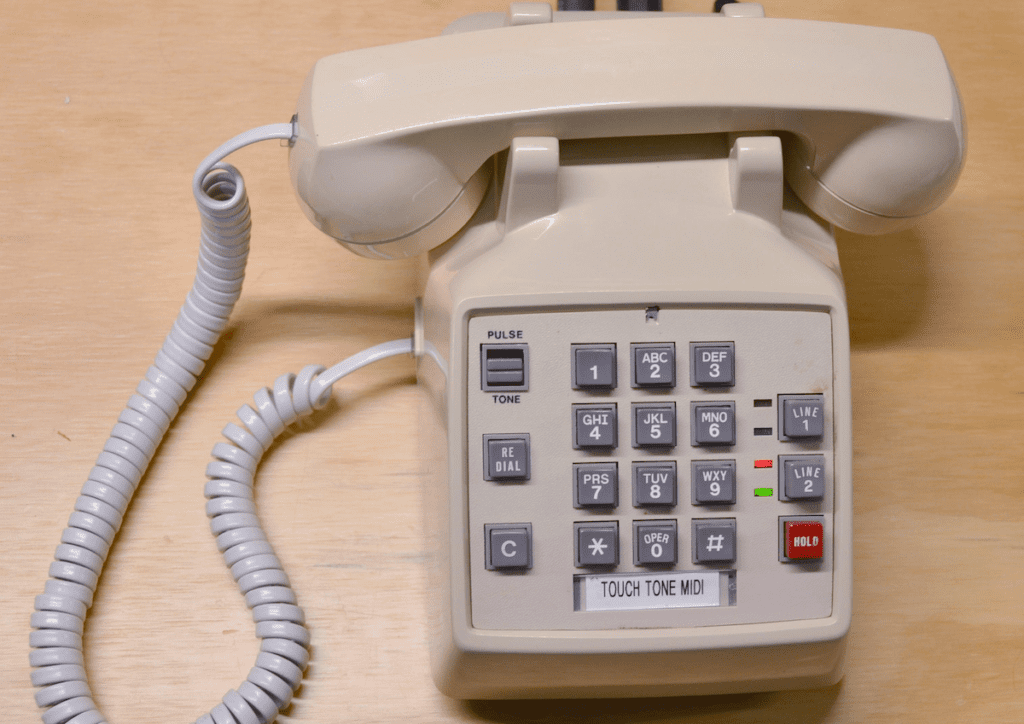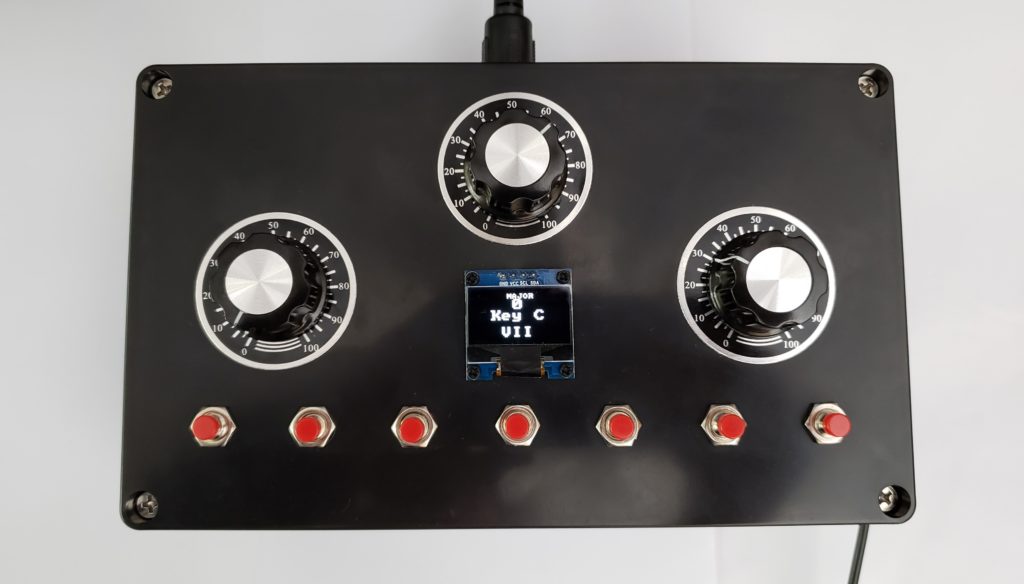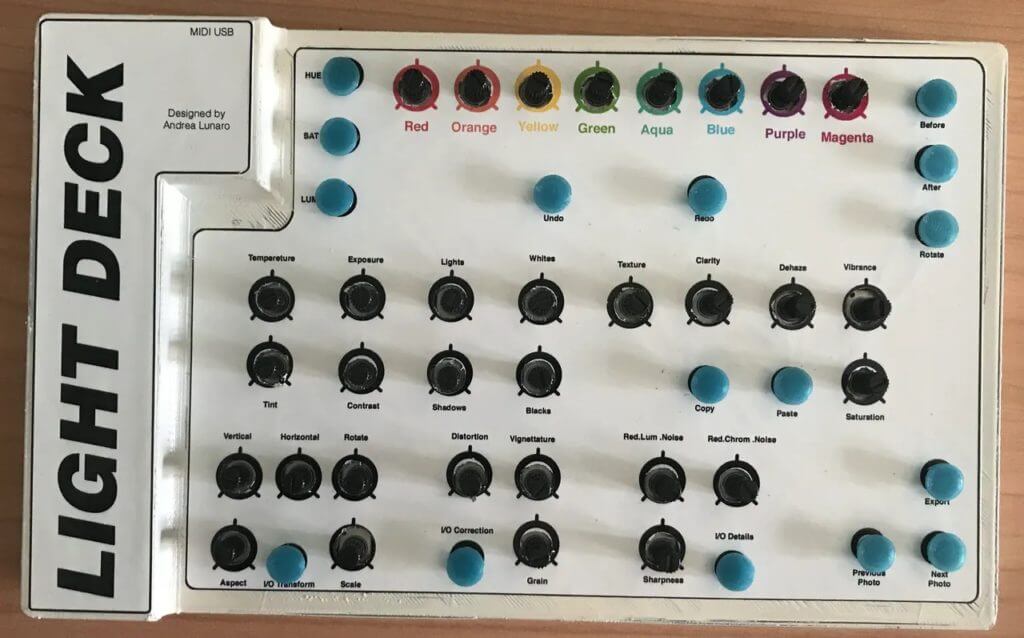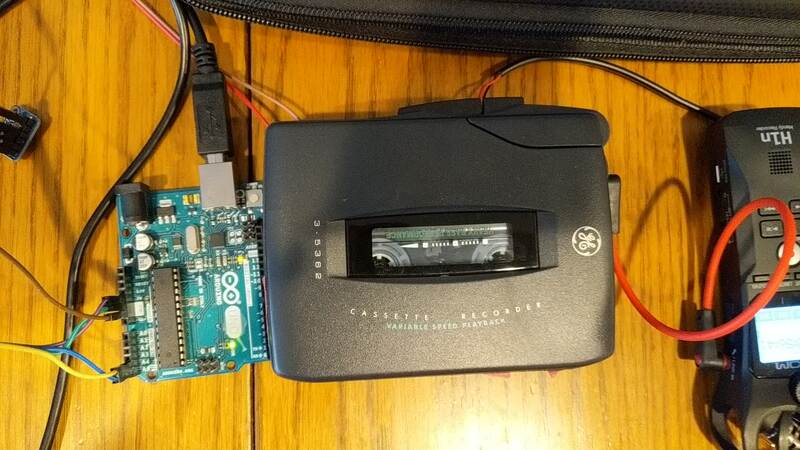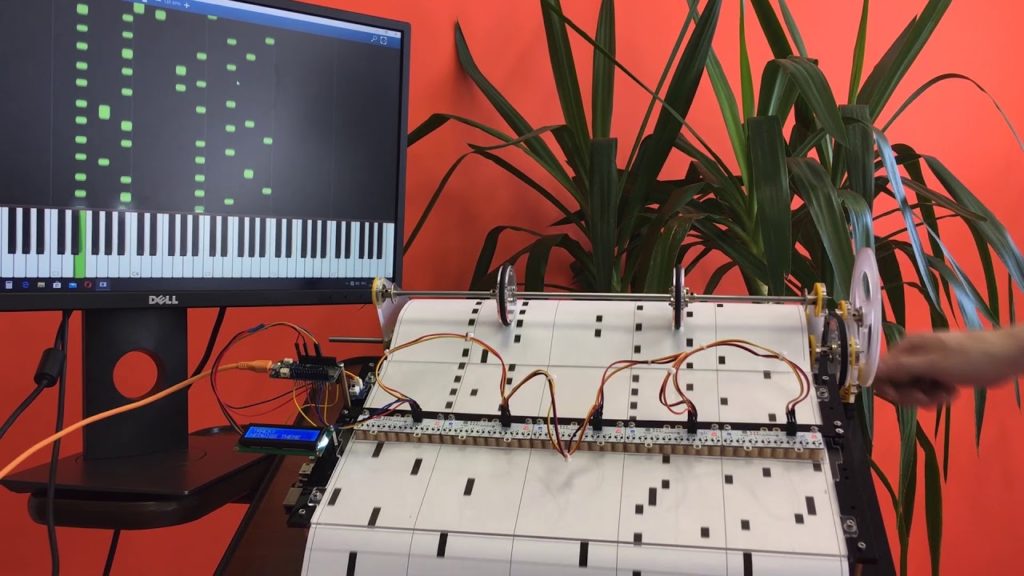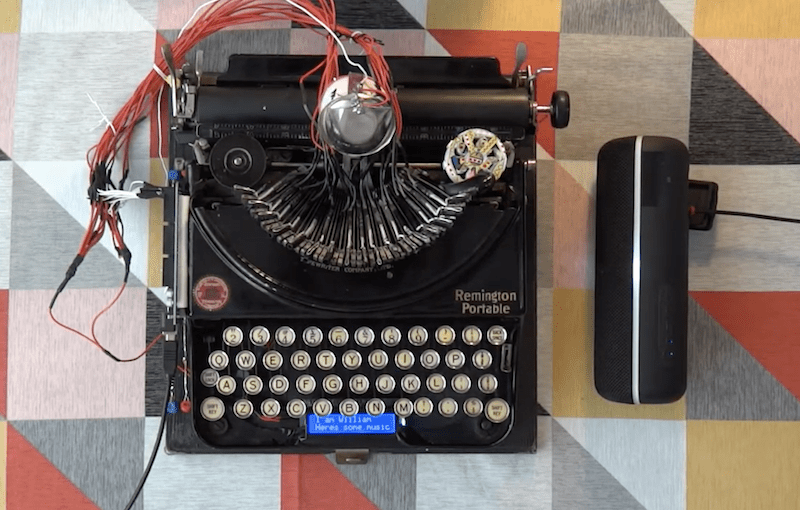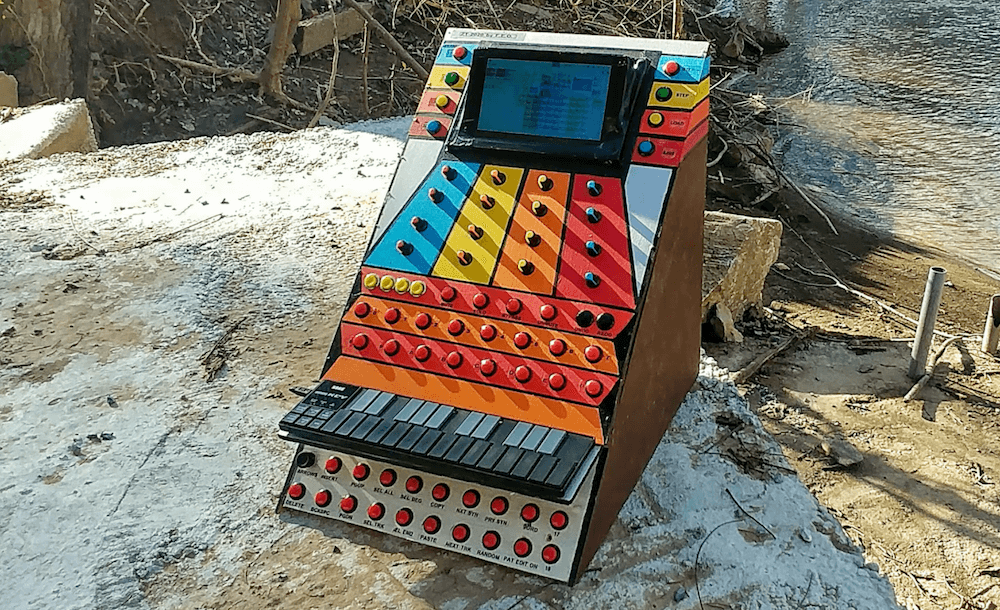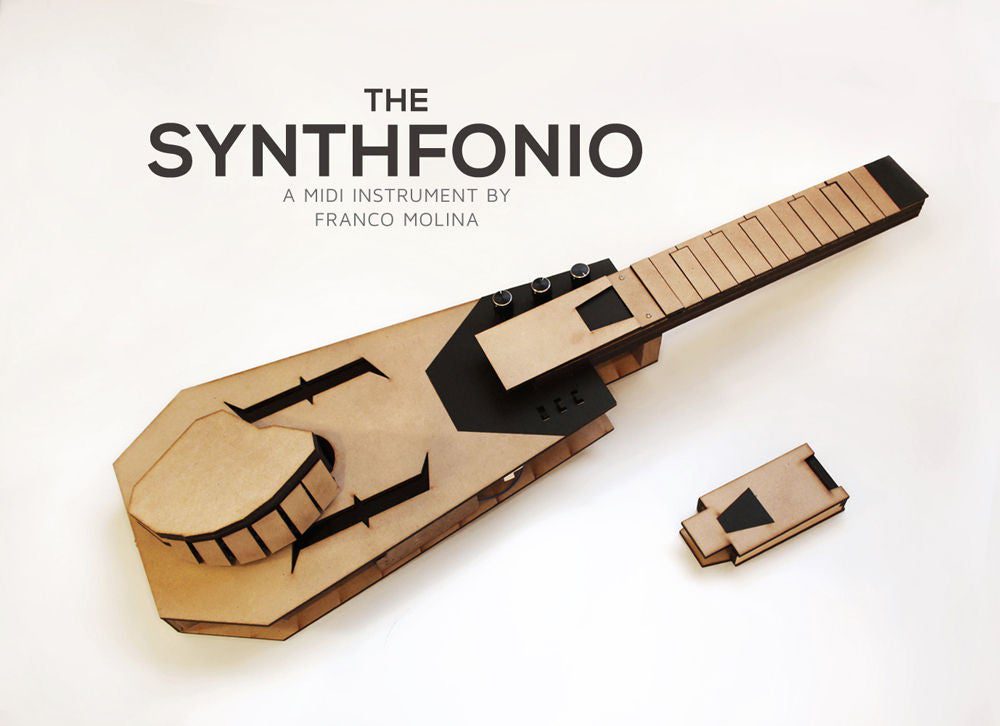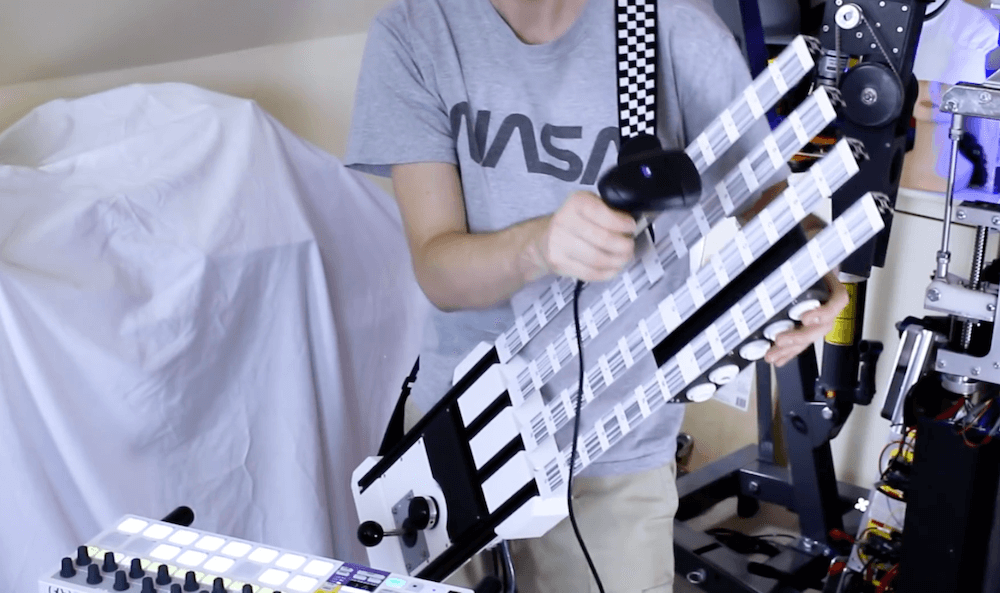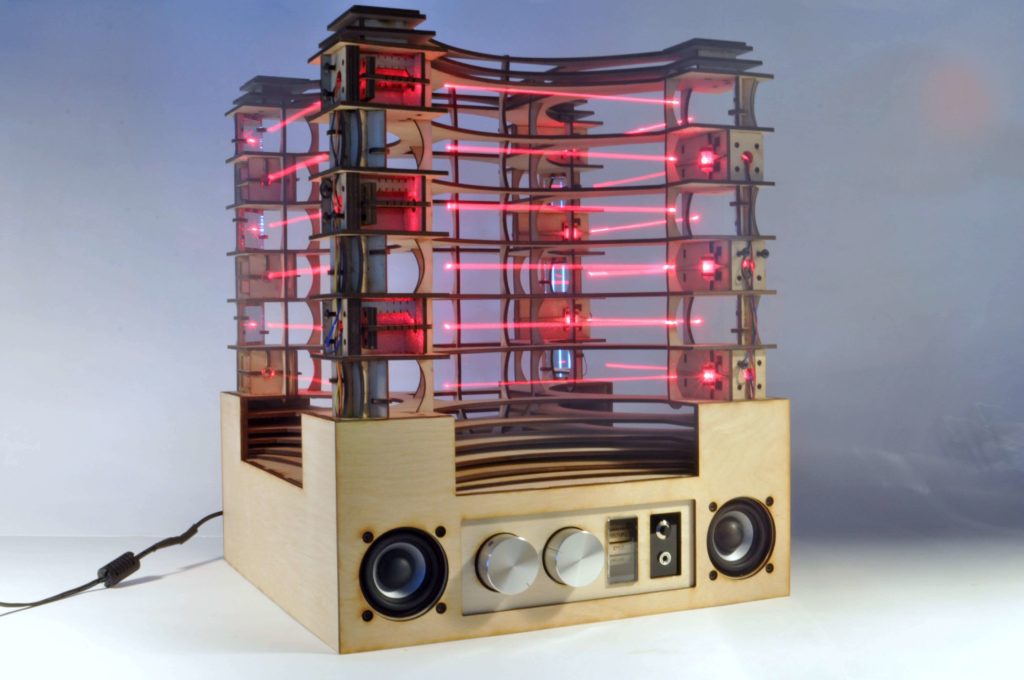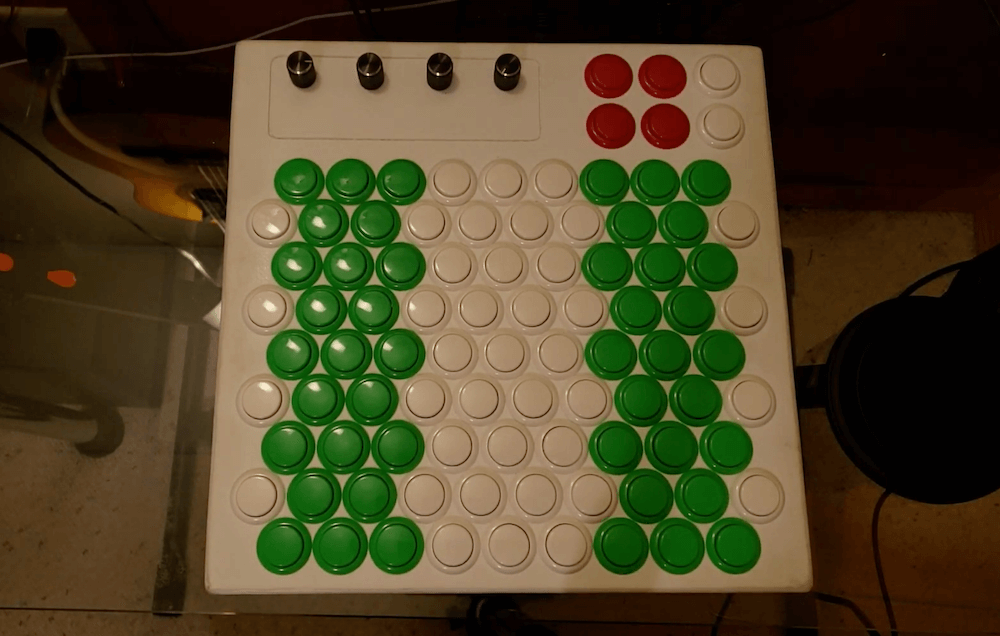Schlagwort: Midi
-

Turning a desk mat into a MIDI drum kit
Reading Time: 2 minutesPlaying drums is a lot of fun, but drum sets are very big and very loud. They also aren’t cheap. Those factors keep them from being an option for many people who would otherwise be interested. Conventional electronic drum sets are much quieter and a bit more compact, but they still take…
-

Reliving elementary school with a robotic recorder
Reading Time: 2 minutesThe recorder is a type of flute that is very popular in elementary schools because the instrument is so simple and inexpensive. If you were born in the last four decades and grew up in a western country, then there is a very good chance that you were required to learn how…
-

Old RC transmitter becomes new MIDI controller
Reading Time: 2 minutesIf you’re going to produce electronic music on a PC, you need some sort of input tool. That can be your keyboard and mouse, but most producers prefer to use a dedicated MIDI (Musical Instrument Digital Interface) controller. That will provide a more intuitive and efficient experience. Instead of buying something new, HYPRREAL turned…
-

Zen sand garden in a suitcase doubles as MIDI controller
Reading Time: 3 minutesAt the shallow end of the pool, a MIDI (musical instrument digital interface) controller can be as simple as a handful of buttons that correspond to different notes. But even as one wades into the deep end of the pool, MIDI controllers tend to still look like hunks of plastic with some…
-

Auto Xylophone features hand-wound solenoids
Reading Time: 2 minutesArduino Team — September 15th, 2022 A xylophone is, in addition to being one of only two known English words that start with the letter X, an instrument that most of us haven’t touched since we were toddlers. But xylophones produce a very pleasing sound and their construction is about as simple…
-

Convert an old telephone into a MIDI instrument
Reading Time: 2 minutesArduino Team — September 1st, 2022 MIDI (Musical Instrument Digital Interface) is a fantastic standard because it is versatile enough to encompass almost all instruments, but simple enough to work with using low-power digital hardware. A typical MIDI message contains three bytes. The first is a status byte that describes the action…
-

The Root Commander is a homemade MIDI controller that ensures you never play the wrong note
Reading Time: 2 minutesArduino Team — May 8th, 2022 After attempting to learn how to play the piano after some previous experience with guitar and music theory in general, YouTuber EvolutionStoneware encountered a few difficulties when trying to learn the keys on a standard MIDI keyboard. Because of this, she created a DIY MIDI controller called the…
-

Making music with a Nano 33 IoT-based MIDI keyboard
Reading Time: 2 minutesArduino Team — December 21st, 2021 As part of an assigned project in his class, Peter Ashmore and a partner were tasked with making some kind of interactive object, so they decided to go with a MIDI keyboard due to their shared enjoyment of music production. Modeled somewhat after the typical Launchpad, the team’s…
-

Light Deck is a MIDI Lightroom controller
Reading Time: 2 minutesArduino Team — October 21st, 2021 Using Adobe Lightroom can be a tedious process, especially for those who don’t have their keyboards set up with a hundred macro shortcuts. Andrea Lunaro wanted to make this process easier by constructing a large, physical bank of buttons and potentiometers that can be used to perform…
-

Use an Arduino touchscreen to draw the waveforms that you’d like your synth to produce
Reading Time: 2 minutesUse an Arduino touchscreen to draw the waveforms that you’d like your synth to produce Arduino Team — August 16th, 2021 Ordinarily, producing complex waveforms on microcontrollers requires precise adjustments within code in order to work, and this can become quite tedious. Additionally, having to wire up physical inputs such as potentiometers…
-

Stryde is an Arduino Nano Every-powered MIDI preset loader
Reading Time: 2 minutesArduino Team — May 23rd, 2021 MIDI-controlled instruments are awesome, as custom sounds can be loaded and dynamically changed while you play. However, accessing these effects often requires an external controller that can get expensive and complicated. That is why music enthusiast Joe King created the Stryde, which is a fully integrated…
-

Convert an old cassette player into a synthesizer
Reading Time: < 1 minuteConvert an old cassette player into a synthesizer Arduino Team — September 22nd, 2020 Cassettes (if you remember those) are normally used to play back music and other audio, but what about using an old Walkman-style tape player as the instrument itself? That’s exactly what this project by Zack Scholl allows you to do,…
-

This maker turned an antique typewriter into a MIDI drum machine
Reading Time: < 1 minuteThis maker turned an antique typewriter into a MIDI drum machine Arduino Team — April 23rd, 2020 Vintage typewriters are truly amazing pieces of technology, but unlike modern keyboards, they are decidedly one-purpose machines. William Sun Petrus, however, had other ideas for his 1920s-era Remington Portable typewriter, augmenting hammers with wires…
-

The ZT-2020 is a portable SunVox synth
Reading Time: < 1 minuteThe ZT-2020 is a portable SunVox synth Arduino Team — February 11th, 2020 SunVox synth software allows you to create electronic music on a wide variety of platforms. Now, with his ZT-2020 project — which resembles a miniature arcade game — YouTuber “fascinating earthbound objects” has a dedicated input scheme. This…
-

The Synthfonio is a guitar-shaped MIDI instrument
Reading Time: 2 minutesThe Synthfonio is a guitar-shaped MIDI instrument Arduino Team — January 30th, 2020 Learning to play an an instrument well takes a lot of time, which many people don’t have. To address this, Franco Molina — who enjoys MIDI controllers and writing music, but describes himself as being terrible at playing the…
-

Playing The Doors with a door (and a Raspberry Pi)
Reading Time: 2 minutesFloyd Steinberg is back with more synthy Raspberry Pi musical magic, this time turning a door into a MIDI controller. I played The Doors on a door – using a Raspberry PI DIY midi controller and a Yamaha EX5 You see that door? You secretly want that to be a MIDI controller?…
-

theMIDInator is a marvelous MIDI controller
Reading Time: 2 minutestheMIDInator is a marvelous MIDI controller Arduino Team — December 9th, 2019 While you may know on some level that an Arduino can help you make music, you probably haven’t seen as good an implementation as this MIDI controller by Switch & Lever. The device features a numeric pad for note input,…
-

Zany MIDI guitar made from barcode scanner and Arduino
Reading Time: < 1 minuteZany MIDI guitar made from barcode scanner and Arduino Arduino Team — September 23rd, 2019 You’ve seen barcode scanners register the price for your groceries, and likely in many other applications, but did you ever consider if one could be made into an instrument? Well we now know the answer, thanks…
-

Horizontal laser harp is like none you’ve ever seen before
Reading Time: 2 minutesHorizontal laser harp is like none you’ve ever seen before Arduino Team — August 19th, 2019 Apparently not content with a traditional laser harp, Jonathan Bumstead set out to take things in a different direction. What he came up with is a device whose laser strings are arranged horizontally, and loop though…
-

A 3D-printed, Arduino Due-based MIDI jammer keyboard
Reading Time: 2 minutesA 3D-printed, Arduino Due-based MIDI jammer keyboard Arduino Team — July 11th, 2019 Michael Koopman wanted to learn piano. However, after finding this pursuit frustrating, he instead decided to assemble his own 3D-printed MIDI jammer keyboard, inspired by the AXiS-49 interface pad. His instrument is controlled via an Arduino Due, with 85…
